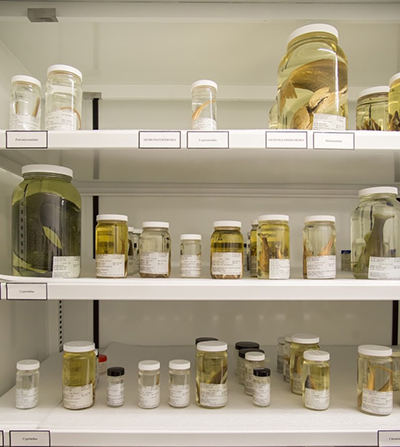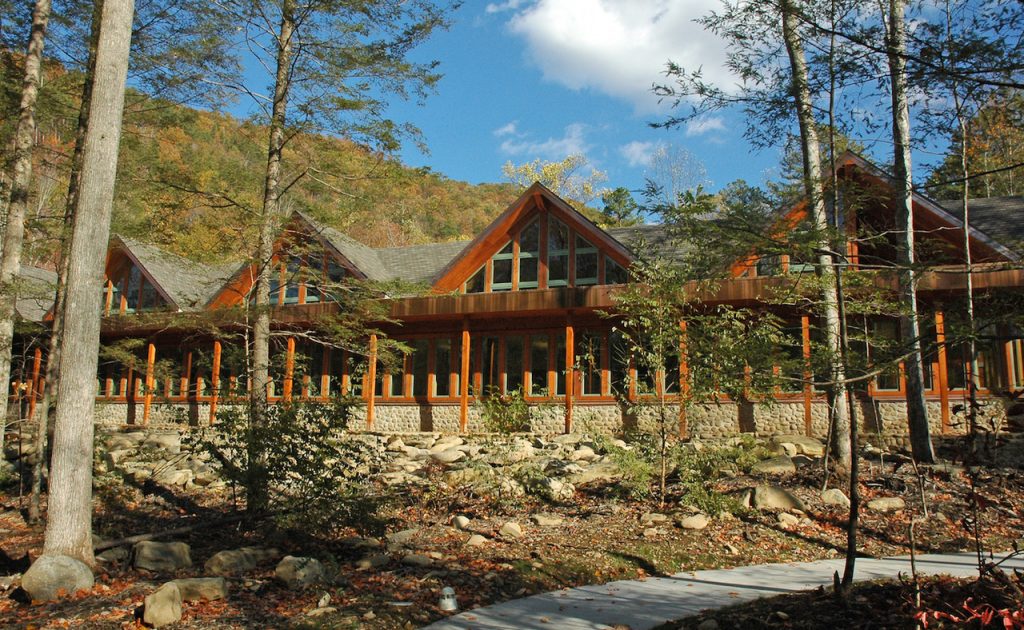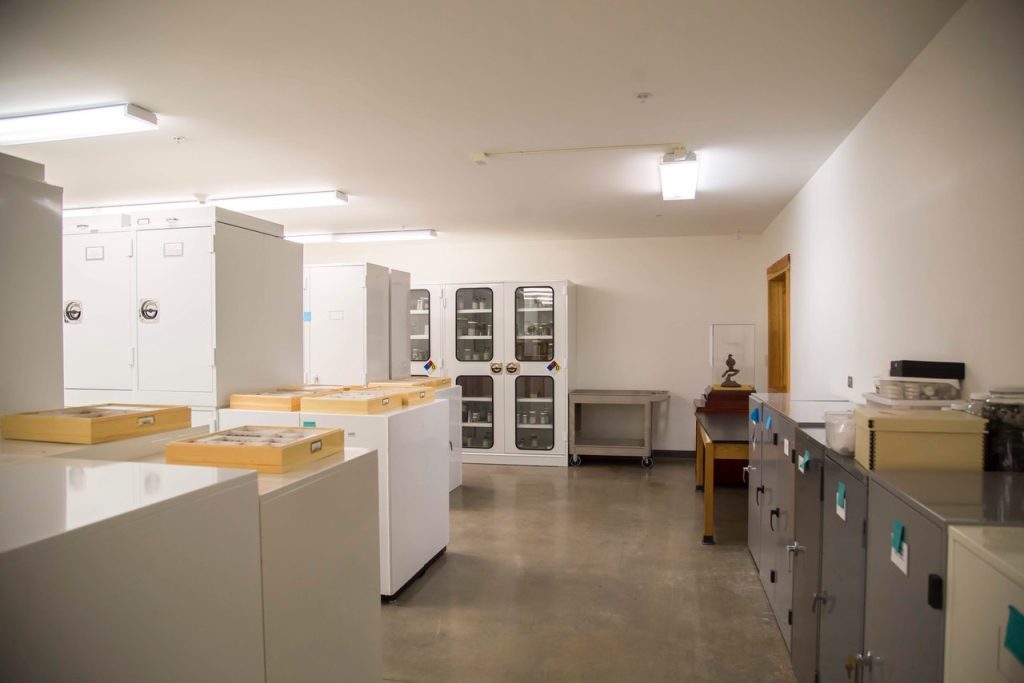
Great Smoky Mountains National Park transferred its collection of more than 50,000 specimens from the basement of Sugarlands Visitor Center to the newly constructed Twin Creeks Science and Education Center, a project made possible in part by funding provided by Great Smoky Mountains Association, more than 10 years ago.
At that time the collection included thousands of species of insects and plants, dozens of salamanders, bears, foxes, birds, and most other life known to exist in the park – all collected by scientists over the course of more than 70 years. The move to a 15,000-square-foot facility, with ample storage room for specimens and scientists, helped protect the already massive natural history collection and promote the expansion of that collection. Now, when a new species is discovered in the Smokies, park scientists record and inventory the specimen at Twin Creeks Science Center.
I have had the opportunity to visit the collection a handful of times, and every time I go, I am stunned by the volume of specimens and the amount of knowledge each provides. Each species is assigned a drawer, folder, or container; in these small spaces, reviewers can clearly see the natural history of an entire species in the park.
Once a month, I plan to visit the natural history collection and open a drawer or cabinet at random. From these visits I’ll share with Cub Report readers all I learn about the species housed there. I’m calling this new collection of stories “Curiosity Cabinet.” I am excited to share more about one of my favorite places in all the park, a single room where most known species can be found. I hope you enjoy and will send me your feedback as we go along.


Subscribe to get the latest posts sent to your email.
The Great Smokies Welcome Center is located on U.S. 321 in Townsend, TN, 2 miles from the west entrance to Great Smoky Mountains National Park. Visitors can get information about things to see and do in and around the national park and shop from a wide selection of books, gifts, and other Smokies merchandise. Daily, weekly, and annual parking tags for the national park are also available.